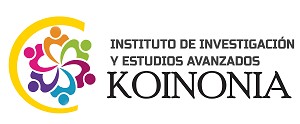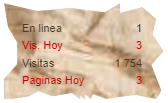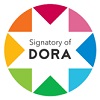Política de protección infantil y gestión de la niñez. Fundamentos teóricos y desafíos actuales
Resumen
La protección de la niñez constituye un derecho fundamental reconocido, sustentado en la Convención sobre los Derechos del Niño, y una prioridad en las políticas públicas. La gestión local, ejemplificada por instancias como la DEMUNA en Perú, enfrenta desafíos estructurales como escasez presupuestaria, insuficiente capacitación y fragmentación institucional. En contextos actuales marcados por la migración forzada, el cambio climático, la explotación sexual y la digitalización, se requiere un enfoque sistémico, interdisciplinario y multisectorial que promueva la prevención, la participación infantil y comunitaria, y la adaptación cultural. Estudios recientes destacan la necesidad de fortalecer la coordinación interinstitucional, los recursos disponibles y la formación especializada, incorporando tecnologías y metodologías participativas. La sostenibilidad de estas políticas demanda alianzas entre el Estado, la sociedad civil, el sector privado y organismos internacionales. Un enfoque integral y articulado es clave para garantizar el desarrollo pleno de la infancia y construir sociedades más equitativas e inclusivas.
Descargas
Citas
Berrick, J. D., Gilbert, N., & Skivenes, M. (2023). The Oxford Handbook of Child Protection Systems. Oxford University Press. https://n9.cl/kph0t
Connolly, M., & Katz, I. (2019). Typologies of child protection systems: An international approach. Child Abuse Review, 28(2), 95–106. https://doi.org/10.1002/car.2596
Chafouleas, S. M., Johnson, A. H., Riley-Tillman, T. C., & Iovino, E. A. (2021). School-based behavioral assessment: Informing prevention and intervention (2nd ed.). Guilford Press. https://n9.cl/ne8id
Diaz Carranza, L. R. (2025). Dinámicas familiares y su impacto en el sistema judicial: Un estudio de revisión sobre progenitores socioafectivos en casos de abuso. Aula Virtual, 6(13), eS2665-03982025000102087. https://n9.cl/8kwuk
Hill, L., & Diaz, C. (2021). An exploration of how gender stereotypes influence how practitioners identify and respond to victims (or those at risk) of child sexual exploitation. Child & Family Social Work, 26(4), 642–651. https://doi.org/10.1111/cfs.12845
Hobson, J., Twyman-Ghoshal, A., Banwell-Moore, R., & Ash, D. P. (2022). Restorative justice, youth violence, and policing: A review of the evidence. Laws, 11(4), 62. https://doi.org/10.3390/laws11040062
Huayra Romero, O., & Contreras Rivera, R. J. (2025). Participación ciudadana digital y transparencia organizacional en gobiernos locales: una revisión sistemática de plataformas, impacto y barreras. Revista InveCom, 6(2), e602055. https://ve.scielo.org/pdf/ric/v6n2/2739-0063-ric-6-02-e602055.pdf
Kustatscher, M., Hadfield, L., & Riddell, J. (2022). Children’s participation in public policy: Beyond tokenism. Childhood, 29(1), 3–20. https://doi.org/10.1177/09075682211057356
Livingstone, S., & Stoilova, M. (2021). Children’s digital rights and online protection. Journal of Children and Media, 15(1), 1–17. https://doi.org/10.1080/17482798.2020.1856109
Lotty, M. (2023). Supporting child welfare practice through an integrated practice model: Trauma, attachment and resilience into action. The Irish Social Worker, Winter. https://hdl.handle.net/10468/15339
Maiter, S., & Stalker, C. A. (2019). Cultural competence in child protection practice. Child & Family Social Work, 24(3), 345–356. https://doi.org/10.1111/cfs.12645
Mazzuca, L., Tanık, M., & Müge, A. (2022). Restorative justice and child protection: Municipal strategies. Children and Youth Services Review, 134, 106345. https://doi.org/10.1016/j.childyouth.2022.106345
Middleton-Moz, J., Mishna, F., Martell, R., Williams, C., & Zuberi, S. (2023). Indigenous trauma and resilience: Pathways to ‘bridging the river’ in social work education. Social Work Education, 42(7), 968–985. https://doi.org/10.1080/02615479.2021.1998427
Morrison, T. (2023). Integrated systems in child protection: Bridging research and frontline practice. Child & Family Social Work, 28(1), 45–59. https://doi.org/10.1111/cfs.12987
Sai Sindhura, B. K., & Kumar, J. G. (2025). A bibliometric analysis of scientific literature on adverse childhood experiences (2004–2024). Global Mental Health, 12, e60. https://doi.org/10.1017/gmh.2025.10009
Stoilova, M., Rahali, M., & Livingstone, S. (2023). Classifying and responding to online risk to children: Good practice guide. London: Insafe Helplines & London School of Economics and Political Science. https://bit.ly/online-risk-guide
UNICEF. (2021). The State of the World’s Children 2021: On My Mind – Promoting, protecting and caring for children’s mental health. UNICEF. https://www.unicef.org/reports/state-worlds-children-2021
van Daalen, K., Dada, S., & Fiolet, T. (2022). Climate change and child health: A global perspective. Lancet Planetary Health, 6(4), e234–e242. https://doi.org/10.1016/S2542-5196(22)00045-3
Derechos de autor 2025 Yuliana Mercedez Acosta-Chávez, Pedro Otoniel Morales-Salazar

Esta obra está bajo licencia internacional Creative Commons Reconocimiento-NoComercial-CompartirIgual 4.0.
CC BY-NC-SA : Esta licencia permite a los reutilizadores distribuir, remezclar, adaptar y construir sobre el material en cualquier medio o formato solo con fines no comerciales, y solo siempre y cuando se dé la atribución al creador. Si remezcla, adapta o construye sobre el material, debe licenciar el material modificado bajo términos idénticos.
OAI-PMH URL: https://cienciamatriarevista.org.ve/index.php/cm/oai














